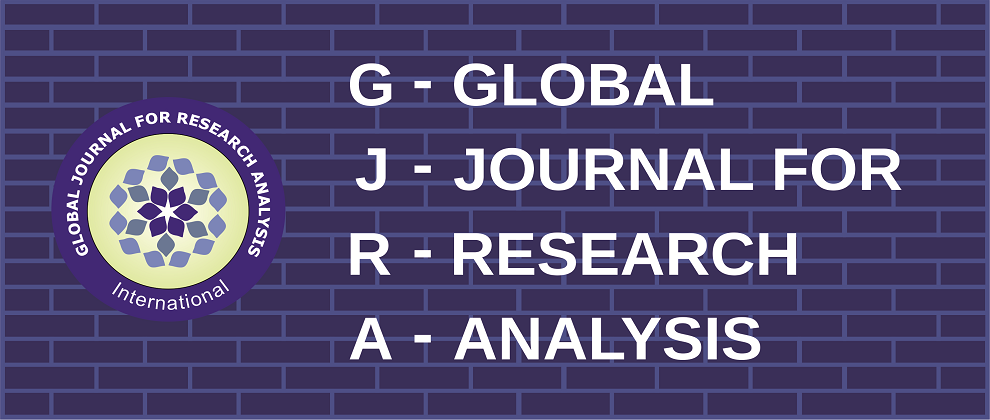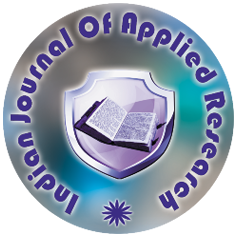Volume : VIII, Issue : I, January - 2019
MICROMORPHOLOGY, ULTRASTRUCTURE AND MOLECULAR STUDIES OF SEAWEED LIQUID FERTILIZER TREATED Arachis hypogaea (L.)
K. Sivakumar
Abstract :
Study was made on the effect of seaweed liquid fertilizer (SLF) from the own alga Sargassum polycystum on the germination, growth, yield and biochemical constituents of Arachis hypogaea. The maximum germination percentage, growth, pigments and biochemical constituents were observed in 25% concentration of SLF. The low values for seed germination, growth and yield parameters, pigments and biochemical constituents were recorded at 100% concentration of seaweed liquid fertilizer. The present study revealed that SLF from S. polycystum can be used for the seed treatment to increase the growth and yield of Arachis hypogaea. Transmission electron microscopic studies were made on the leaf cells in Arachis hypogaea showed that the cells were formed from the inwardly from the central cell a large inclusion was anchored to the cell wall. This inclusion was highly vacuolated containing many electron opaque matrix, some of the vacuoles appeared to be partially osmiophilic, although these more likely represent artifacts due to glancing section of the vacuole memane. The initial stages of vacuole formation are characterized by the presence of smooth surfaced electron dense vesicles 0.1-1.0 m, which are disposed throughout the cytoplasm continuities between smooth ER like cisterna and the enlarging vesicles suggest that the electron dense material is reduced in the abundant PER and sequestered in the smooth ER (SER) continued deposition of the cisternal material and enlargement of inter connected cisternal results in vescile coalescence to form the developing vacuole. Ultrastructural studies revealed that, originating from gland cells in comprised of numerous electron translucent vacuoles enclosed by an electron-opaque matrix. Gland cell walls are relatively thin, which in turn would aid the transfer of metabolites to the stalk-like structure. These features of the gland cells provide essential clues to the production and storage of the halogenated metabolites in Arachis hypogaea. High quality DNA extractions are a prerequisite for genetic studies for a variety of plants including Arachis hypogaea. Nowadays, there are great number of plant DNA extraction method and commercially available extraction kit are also becoming more and more popular. It appears that different procedures work best for different plant groups. Thus in the genetic studies of A. hypogaea, choosing CTAB method to choose becomes a concern. The DNA extracted by this method from (Control and Seaweed Liquid Fertilizer (SLF) treated fresh young leaf tissue of A. hypogaea was analysed according to their cost and time, yield, purity, integrity and PCR (Polymerase Chain Reaction) based downstream analysis. The quality and quantity of isolated DNA was measured by Nano photometer. The absorption value A260/280 was calculated. Based on OD values the 10% and 25% of SLF treated plants showed pure and contaminant free DNAs when compared to control plants. Further the isolated genomic DNA was checked with 0.8% agarose gel electrophoresis stained with ethidium omide to check the DNA quality. The gel was photographed under gel documentation system. In addition, the quantity and quality of the DNA extracted by this method were high enough to perform hundreds of PCR based reactions.
Keywords :
Article:
Download PDF
DOI : https://www.doi.org/10.36106/gjra
Cite This Article:
MICROMORPHOLOGY, ULTRASTRUCTURE AND MOLECULAR STUDIES OF SEAWEED LIQUID FERTILIZER TREATED ARACHIS HYPOGAEA (L.), K. SIVAKUMAR GLOBAL JOURNAL FOR RESEARCH ANALYSIS : Volume-8 | Issue-1 | January-2019
Number of Downloads : 683
References :
MICROMORPHOLOGY, ULTRASTRUCTURE AND MOLECULAR STUDIES OF SEAWEED LIQUID FERTILIZER TREATED ARACHIS HYPOGAEA (L.), K. SIVAKUMAR GLOBAL JOURNAL FOR RESEARCH ANALYSIS : Volume-8 | Issue-1 | January-2019


 MENU
MENU


 MENU
MENU


